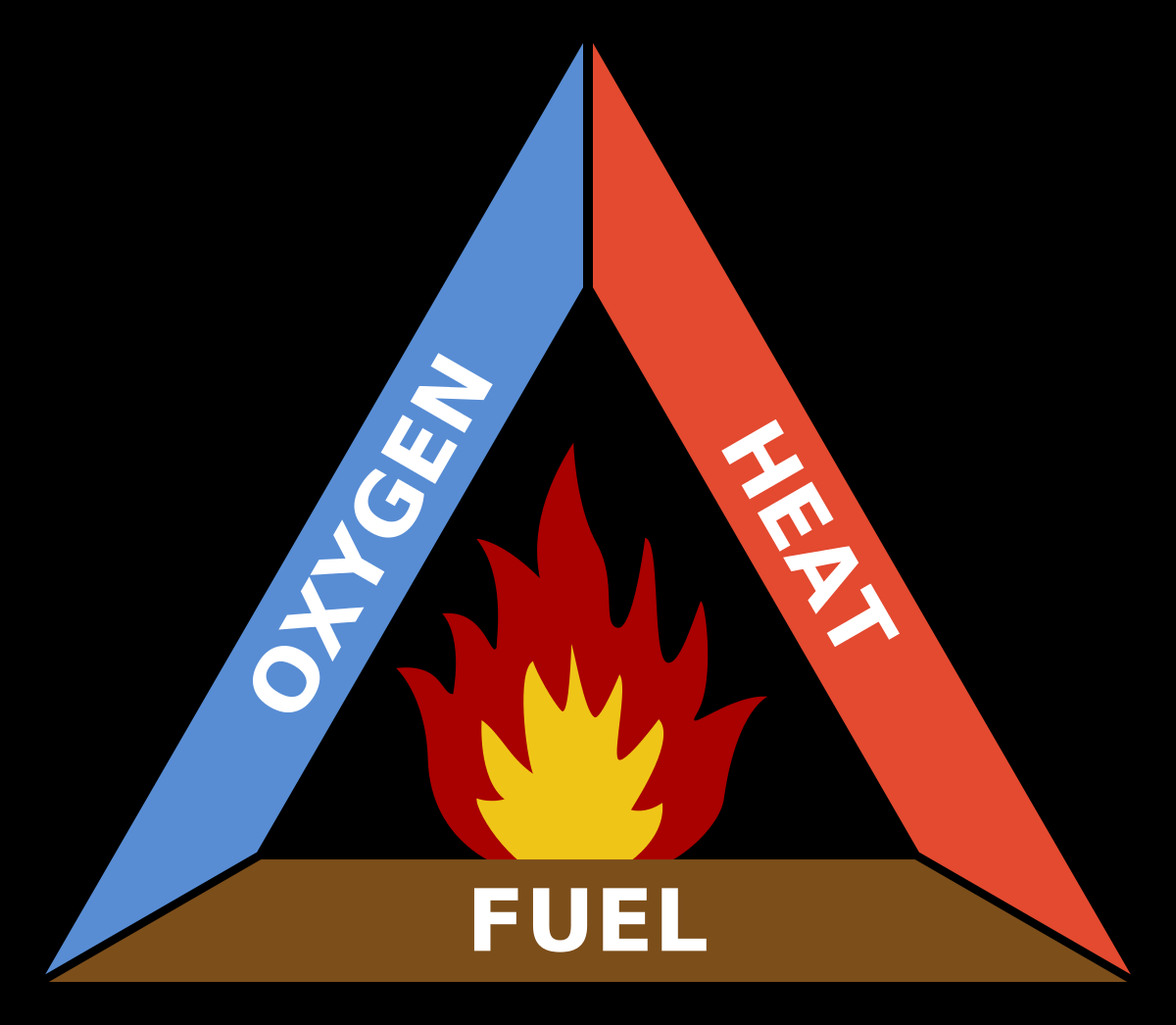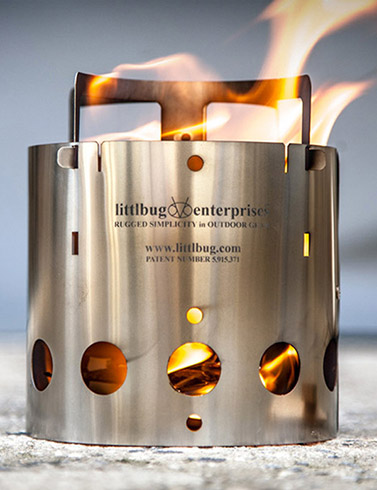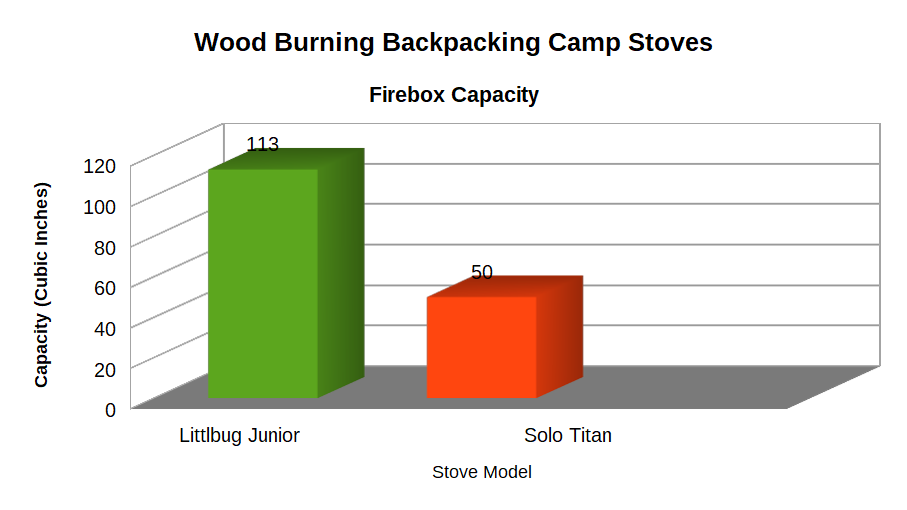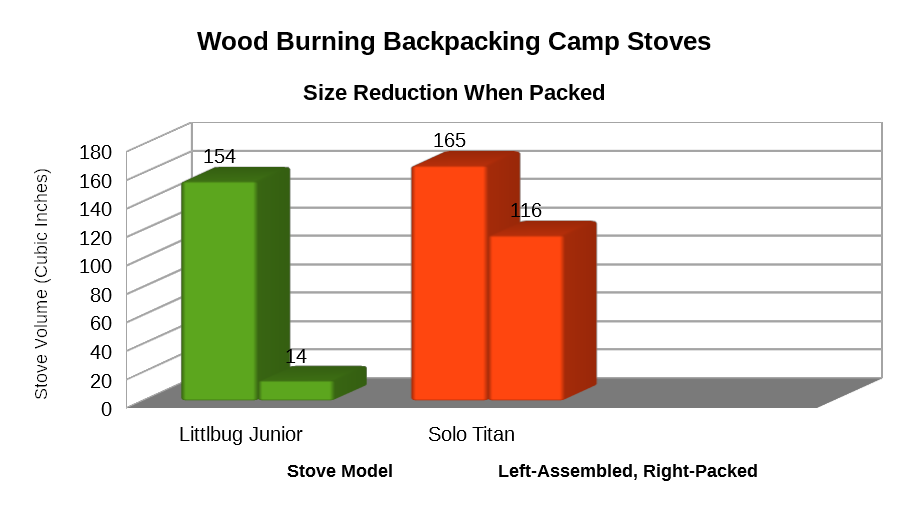- Home
- The Littlbug Blog
- Your Outdoor Skills: Fire and Smoke
Recent Posts
Your Outdoor Skills: Fire and Smoke
Posted by on
There's a lot of hype on the internet about wood burning backpacking stoves that rely on secondary combustion to reduce smoke. If you believe the hype, you'll end up purchasing a stove that's heavier, bulkier and more expensive than what you really need. The complexity of secondary combustion technology in a stove is unnecessary for reducing smoke. If you burn it right the first time, you don't have to burn it twice!
When I first started camping, I couldn't even start a fire (I really hate to admit that)! With a little knowledge and practice, that all changed. I'm confident that if I can do it, so can you. Here's what you need to know to keep smoke from bothering you.
What causes smoke?
Incomplete combustion.
What's needed for complete combustion?
- Fuel
- Heat
- Oxygen
The fire triangle:

What to know about fuel?
- Gather sticks that are well seasoned and no larger than the width of your thumb. Larger sticks can be split with a sturdy knife and a club (aka a good solid stick).
- If a stick snaps when you break it, that is a good indication that it is well seasoned.
- Start the fire with tinder and small kindling.
- Depending on where you are, nature provides abundant sources of tinder such as dry pine needles, birch bark, shredded bark or shavings from sticks. An easy and safe way to make shavings is to use a small pencil sharpener.
- With a stove like the Littlbug Stove, loosely fill the firebox with kindling, place your tinder on the top and light it.
- As the fire catches, slowly add more sticks gradually increasing the size of the fuel.
- Avoid overloading the firebox. This will impede airflow and generate smoke.
What to know about heat?
- You need an initial source of heat (match, lighter, flint and steel…).
- Once lit, fuel and oxygen will keep the fire going.
- As heat increases, smoke decreases.
What to know about oxygen?
Placing sticks on end in the firebox allows air to surround the fuel and will give you more complete combustion. I've found this to be the most important factor for reducing smoke. The Littlbug firebox is designed to hold sticks upright, surrounding them with oxygen as they burn.

A stove with a large firebox will provide you with enough space to add fuel without obstructing air flow.
Littlbug Stoves are unmatched in maximizing the size of the firebox while minimizing the size of the stove when disassembled and stowed for transport.
Here is a comparison of the firebox capacity and the size reduction when packed of the Littlbug Junior and Solo Titan (a stove that requires secondary combustion for a clean burn).


Important compromises a backpacker has to make for the complexities of a stove that uses secondary combustion are shown in this table:
|
Littlbug Junior |
Solo
Titan
(uses secondary combustion) |
The Full Cost of Secondary Combustion (Solo compared to Littlbug) |
|
| Weight | 5.1 oz | 16.5 oz | 220% heavier than Littlbug |
| Packed Size | 14 cu in | 116 cu in | 725% larger than Littlbug when packed |
| Firebox Capacity | 113 cu in | 50 cu in | 55% smaller firebox than Littlbug |
| Price1 | $54.95 | $89.99 | 63% higher price than Littlbug |
1 prices subject to change
A lighter pack and a lower price always brings a smile to my face! Here at Littlbug Enterprises we believe the more skills you bring with you, the less you have to carry. Skills never break and they're never left behind. As your outdoor skills increase you begin relying more on your skills and less on technology. You'll be safer, you're self-confidence will grow and you’ll probably end up with more cash in your pocket!

 Loading... Please wait...
Loading... Please wait...








